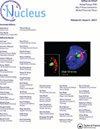基于滤波卡尔曼法预测ARIMA模式在哥打占比地区降雨的实现
IF 4.5
3区 生物学
Q3 CELL BIOLOGY
引用次数: 0
摘要
在过去三年中,占碑市的气候条件经历了不稳定的天气条件。预测降雨的一种方法是使用卡尔曼滤波方法。然而,在这种情况下,卡尔曼滤波方法是对ARIMA(自回归综合移动平均)的预测结果实施的,因为BMKG Muaro Jambi气象站有2008年至2017年的降雨量测量数据,这也是时间的函数,现有的模式将使用时间序列分析来描述。时间序列数据是指一个对象的时间序列超过一年的数据,或者是一个对象多次采集的数据。接下来的数据将采用ARIMA模型进行预测。卡尔曼滤波是状态空间的一个模型部分,可用于预测模型。卡尔曼滤波包括预测阶段和校正阶段。该方法采用递归技术,将最新的观测数据整合到模型中,以修正以前的预测并进行进一步的预测。本研究旨在确定卡尔曼滤波方法在占碑市ARIMA模式降雨预测中的实施情况。2018年占壁市降水预测研究结果表明,形成的最佳ARIMA模型为ARIMA模型(1,0,1)。在卡尔曼滤波模型中,得到的MAPE值为24.92%,说明卡尔曼滤波具有较好的预测能力。本文章由计算机程序翻译,如有差异,请以英文原文为准。
The Implementation of a Filter Kalman Method Forecasting Rainfall Obtained Through Model ARIMA in Kota Jambi
In the last three years the climatic conditions in Jambi City have experienced erratic weather conditions. One way to predict rainfall is using the Kalman Filter approach. However, in this case, the Kalman Filter method is implemented on the forecasting results from ARIMA (Autoregressive Integrated Moving Average) because there has been rainfall measurement data from 2008 to 2017 at the BMKG Muaro Jambi Climatology Station which is also a function of time and the existing pattern will be described with using Time Series Analysis. Time series data is data that has a time series of more than one year on one object or data collected from time to time on one object. ARIMA model will be used to predict the next data. Kalman filter is a model part of state space that can be applied in forecasting models. The Kalman filter consists of a prediction stage and a correction stage. This method uses a recursive technique to integrate the latest observational data into the model to correct previous predictions and make further predictions. This study aims to determine the implementation of the kalman filter method in predicting rainfall obtained through the ARIMA model in Jambi City. The results of the 2018 Jambi City rainfall prediction research show that the best ARIMA model formed is the ARIMA model (1,0,1). In the Kalman Filter model, a MAPE value of 24.92% is obtained, which indicates that the Kalman Filter has a fairly good predictive ability.
求助全文
通过发布文献求助,成功后即可免费获取论文全文。
去求助
来源期刊

Nucleus
CELL BIOLOGY-
CiteScore
5.60
自引率
5.40%
发文量
16
审稿时长
13 weeks
期刊介绍:
Nucleus is a fully open access peer-reviewed journal. All articles will (if accepted) be available for anyone to read anywhere, at any time immediately on publication.
Aims & Scope: The eukaryotic cell nucleus is more than a storage organelle for genomic DNA. It is involved in critical steps of cell signaling and gene regulation, as well as the maintenance of genome stability, including DNA replication and DNA damage repair. These activities heavily depend on the spatial and temporal “functional” organization of the nucleus and its integration into the complex meshwork of cellular scaffolding.
Nucleus provides a platform for presenting and discussing cutting-edge research on all aspects of biology of the cell nucleus. It brings together a multidisciplinary community of scientists working in the areas of:
• Nuclear structure and dynamics
• Subnuclear organelles
• Chromatin organization
• Nuclear transport
• DNA replication and DNA damage repair
• Gene expression and RNA processing
• Nucleus in signaling and development
Nucleus offers a variety of paper formats including:
• Original Research articles
• Short Reports
• Reviews
• Commentaries
• Extra Views
• Methods manuscripts.
 求助内容:
求助内容: 应助结果提醒方式:
应助结果提醒方式:


